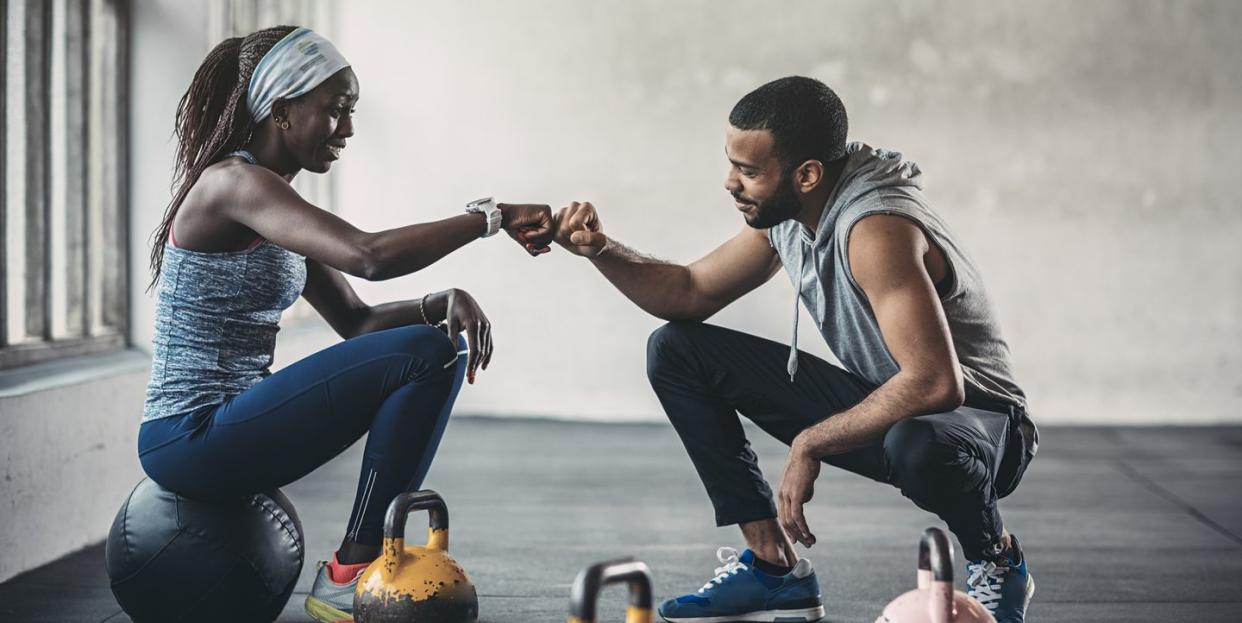Trainer Experience Linked to Pain Level After a Workout, Study Suggests

A study published in the journal Sports found that clients working with trainers with fewer than five years of experience had a higher risk of postworkout pain, compared to those working with trainers with more experience.
Experts suggest looking into trainers’ experience level, but also finding one who prioritizes safety, makes a plan and adjusts it specifically to you, and one who you get along with, as determined by an initial interview.
A tough workout usually has some level of risk for next-day soreness, but when it comes to actual pain, a recent study suggests trainer experience could make a difference.
Published in the journal Sports, the study included nearly 1,200 participants, ages 15 to 60, who worked out in 74 fitness centers in Bangladesh. Researchers collected information on trainer education, trainer experience, and postworkout pain levels.
They found that those who were guided by trainers with fewer than five years of experience had higher risk of musculoskeletal pain and more than twice the risk of pain in multiple parts of the body. Trainer education or certifications didn’t play a significant role.
In their conclusion, the researchers noted that these findings are in line with previous research, which shows that personal trainers, sports coaches, and strength and conditioning coaches’ knowledge of injury management is essential for the prevention of injuries and pain.
One reason for this association between trainer experience and pain may be that the trainers simply pay more attention, the researchers added. Among participants coached by less experienced trainers, injury was higher due to lack of supervision. Also, they found that more experienced trainers could make adjustments for injury management, as well as prevention. That might include modifications for moves or other personalized steps to help the client perform.
For cyclists who want to explore more cross-training—an effort that can improve your cycling performance—hiring a trainer is a helpful step, but looking at years of experience is only one variable to consider, according to trainer Chris Gagliardi, C.P.T., C.S.C.S. He told Bicycling that when it comes to an effective training plan, it’s crucial to find a trainer who can understand your goals and works with cyclists specifically.
That way, the trainer will be tuned into what type of exercise can complement cycling rather than mimic the movement. “For example, if a trainer has you warm up by getting on a stationary bike, that’s not helpful because then you’re just repeating what you do all the time,” said Gagliardi. “That’s not cross training.”
Also, a trainer should be able to provide a tailored workout that is adjusted for other factors, such as your general level of fitness, overall mobility, previous and current injuries, age, and potential medical conditions that affect exercise. For example, people with diabetes have to be cautious with workout intensity if blood sugar fluctuations arise.
Hiring a trainer often involves an interview process that includes an initial in-person or virtual meeting, he added. “You want the trainer to dig deeper into what you want, and mainly look for a personal connection,” he said. “Do you have rapport? Do you feel like they’re a good listener? On paper, you might be the perfect match for each other. But you don’t know until you have a real conversation.”
From there, an experienced trainer should be able to adjust workouts that align with your larger goal—building leg strength for an upcoming race, for example, or focusing on a bigger range of motion in your shoulders to counteract the hours spent crunched over your bike. If you have pain and the trainer tries to motivate you to push through it, Gagliardi suggested that’s the most prominent red flag for making a switch.
“Always, safety should be the top concern,” he said. “If you don’t feel safe, go back to the interviewing step and find a better trainer.”
You Might Also Like

